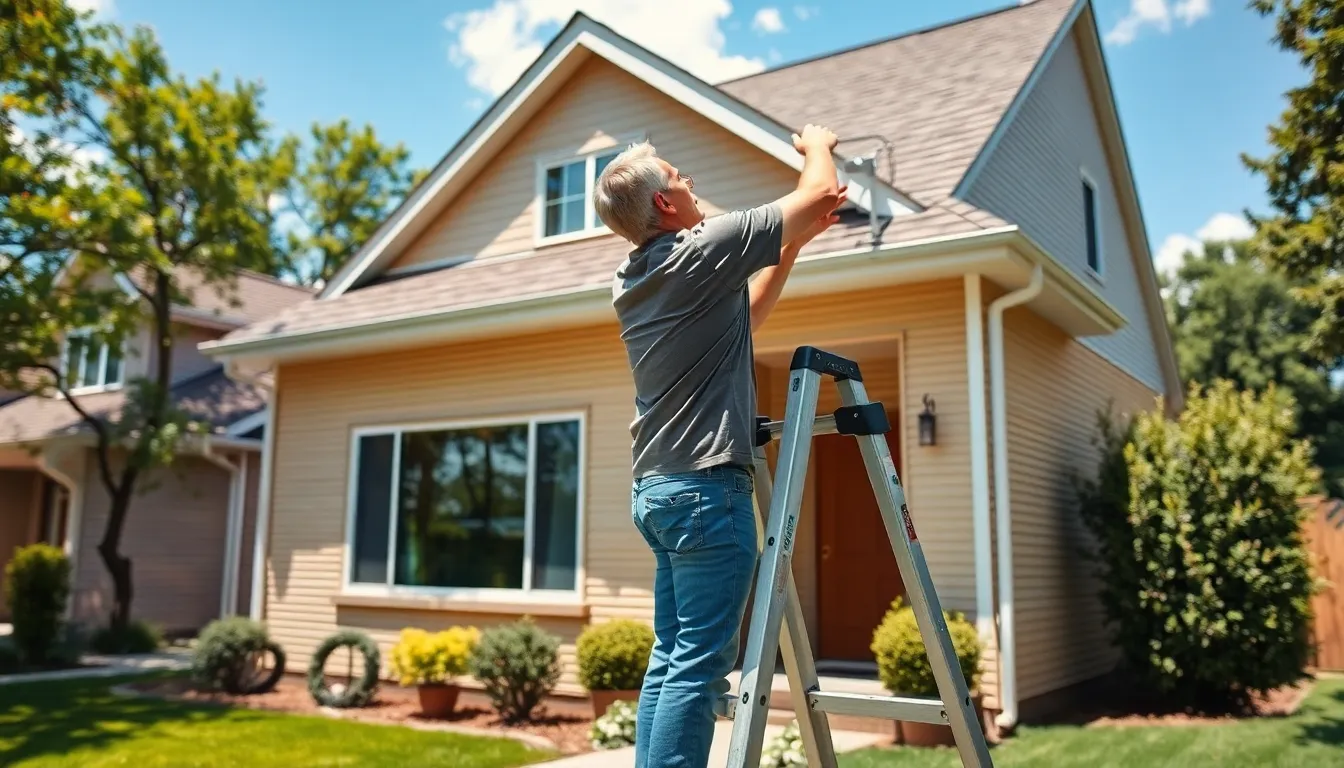Keeping a home in tip-top shape can feel like a never-ending game of Whac-A-Mole. One minute, you’re fixing a leaky faucet, and the next, you’re battling the dust bunnies in the corner. But fear not! A well-planned home maintenance schedule can turn this chaotic circus into a smooth operation.
Table of Contents
ToggleUnderstanding Home Maintenance Schedule
A home maintenance schedule streamlines upkeep tasks, ensuring efficiency and organization. Individuals can significantly reduce unexpected problems with an effective plan in place.
Importance of a Maintenance Schedule
Establishing a maintenance schedule provides structure. Homeowners can allocate specific times for routine tasks, making upkeep manageable. Organized schedules help prevent costly repairs from neglected issues. Staying proactive reduces the chance of surprise visits from contractors. Regular attention to home systems keeps properties in good condition, enhancing their longevity. Coordinating seasonal tasks also ensures that homeowners remain focused and efficient.
Benefits of Regular Home Maintenance
Engaging in regular maintenance offers numerous advantages. First, routine inspections identify small issues before they escalate. Reduced energy costs often result from maintaining equipment effectively. Increased property value stems from consistent care and improvements. Improved safety also arises from ensuring systems function properly. Enhanced aesthetic appeal is achieved through regular care of external features. Overall, these benefits contribute to a well-maintained, comfortable living environment.
Creating Your Home Maintenance Schedule


A well-structured home maintenance schedule enhances organization and efficiency. Homeowners can streamline tasks by identifying key areas that require regular attention.
Identifying Key Areas to Maintain
Roofing systems demand regular inspections. Plumbing fixtures should receive checks for leaks or corrosion. Homeowners must monitor heating and cooling systems to ensure optimal performance. Exterior landscaping requires seasonal trimming and cleaning. Foundation integrity also needs evaluation at least once yearly. Appliances like refrigerators, ovens, and washing machines benefit from routine upkeep checks. Lastly, electrical systems must undergo annual inspections to prevent hazards. Prioritizing these areas ensures a safe and functional living space.
Frequency of Maintenance Tasks
Monthly tasks include checking smoke detectors and changing HVAC filters. Quarterly responsibilities might involve cleaning gutters and inspecting fire extinguishers. Biannual duties often encompass deep cleaning carpets and servicing major appliances. Seasonal responsibilities include winterizing outdoor plumbing in the fall and checking for pest infestations in the spring. Conducting annual inspections of roofs, foundations, and electrical systems is essential. Establishing this frequency helps prevent larger issues from arising.
Seasonal Home Maintenance Tasks
Seasonal home maintenance tasks keep properties in top shape throughout the year. Focusing on these responsibilities helps prevent larger issues from developing.
Spring Maintenance Checklist
Inspect the roof for any damage caused by winter weather. Clean gutters to avoid drainage issues. Examine HVAC systems to ensure they operate efficiently after months of inactivity. Check for pest infestations as warmer weather approaches. Test smoke detectors, ensuring batteries are fresh. Fertilize and aerate lawns, promoting healthy growth. Prune trees and shrubs for better light exposure and air circulation.
Summer Maintenance Checklist
Maintain air conditioning units for optimal performance during hot months. Check and repair screens on windows and doors, protecting against insects. Clean outdoor furniture and inspect it for wear. Adjust irrigation systems, ensuring proper watering of gardens and lawns. Inspect swimming pools for cleanliness and function, maintaining a safe environment. Seal driveways and walkways to protect against wear from heat and moisture.
Fall Maintenance Checklist
Prepare heating systems for the colder months ahead. Inspect chimneys and clean them, preventing fire hazards. Rake leaves regularly to maintain lawn health. Winterize outdoor plumbing to avoid burst pipes. Clean gutters and downspouts once more, ensuring effective drainage. Check insulation in attics and crawl spaces, enhancing energy efficiency. Test smoke and carbon monoxide detectors for safety.
Winter Maintenance Checklist
Inspect the home for drafts, sealing any gaps to conserve energy. Clear pathways and driveways of snow and ice, ensuring safe access. Monitor heating systems for consistent performance. Test the sump pump regularly to prevent flooding during thaws. Check water heater settings, ensuring efficiency during colder months. Maintain emergency supplies, preparing for potential outages and emergencies.
Tools and Resources for Home Maintenance
Effective home maintenance relies on the right tools and resources. Utilizing technology and tangible aids helps streamline scheduling and task management.
Digital Tools for Scheduling
Homeowners can leverage various digital tools for scheduling maintenance tasks. Apps such as HomeZada and Cozy provide customizable checklists and reminders for routine upkeep. Calendar applications like Google Calendar allow users to set alerts for monthly and seasonal tasks. These platforms often sync across devices, ensuring accessibility. Integration with smart home systems enhances automation in monitoring tasks. Prioritizing specific dates for inspections or seasonal preparations reduces stress and helps maintain organization.
Printable Checklists
Printable checklists serve as practical aids for home maintenance. Homeowners can create tailored lists based on seasonal needs, ensuring no tasks are overlooked. Sample checklists are available online for spring, summer, fall, and winter maintenance, covering essential areas like roofing, plumbing, and HVAC systems. Hard copies allow for easy reference during home inspections. Checklists enhance accountability and promote consistent effort in upkeep routines. Keeping physical copies near the maintenance area aids in visibility and encourages regular task completion.
Establishing a home maintenance schedule is vital for any homeowner looking to protect their investment and maintain a comfortable living environment. By proactively addressing maintenance tasks, they can prevent small issues from escalating into costly repairs. Regular upkeep not only enhances the property’s longevity but also boosts its aesthetic appeal and value.
Utilizing digital tools and seasonal checklists simplifies the process, making it easier to stay organized and on track. With a structured approach to home maintenance, homeowners can enjoy peace of mind, knowing their home is well-cared for throughout the year. Embracing this strategy ultimately leads to a healthier and more enjoyable living space.



